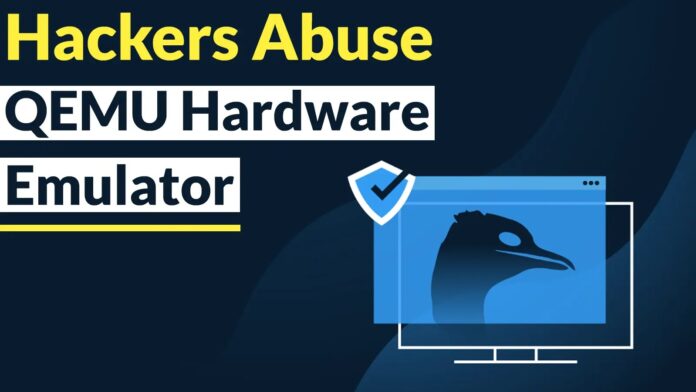[ad_1]
QEMU is an open-source platform that provides a secure and private virtualized space for trying out malicious codes, exploits, and attacks on their own environments.
This controlled testing ground minimizes the risk of detection and legal matters.
Moreover, QEMU permits hackers to develop malware that can run across different hardware architectures and operating systems.
Cybersecurity researchers at Kaspersky Labs recently discovered that hackers are abusing the QEMU hardware emulator to exfiltrate stolen data covertly.
QEMU Hardware Emulator
Attackers love using genuine tools in order to avoid detection but also to reduce malware expenditure.
Data exfiltration, drive encryption, remote execution, and memory dumping are some of the network scanning activities that trusted software supports.
Pre-installed malware or employee-mimicking RDP/VPN access acts as footholds through compromised systems.
Network tunnels and port forwarding utilities enable users to bypass NAT and firewalls, thus gaining entry into the internal system.
Numerous tools exist for creating network tunnels between systems, some direct, others using proxies to mask attacker IPs.
These utilities frequently surfaced during researchers’ incident response efforts over the past three years.
Here below we have mentioned the tools:-
- Stowaway
- ligolo
- 3proxy
- dog-tunnel
- chisel
- FRP
- ngrok
- gs-netcat
- plink
- iox
- nps
Experts uncovered suspicious activity in a company’s system during a recent investigation. Among the tools detected were Angry IP Scanner, mimikatz, and QEMU.
The presence of QEMU puzzled security analysts – why would attackers use a virtualizer? Further analysis revealed an unusual QEMU execution command line without a LiveCD or disk image.
Here below we have mentioned all the arguments:-
- m 1M: Allocated only 1MB RAM, which is insufficient for most OSes.
- netdev user,id=lan,restrict=off: Created virtual network interface ‘lan’ to communicate externally, without restrictions.
- netdev socket,id=sock,connect=<IP>:443: Socket interface ‘sock’ connected to remote server at <IP>:443.
- netdev hubport,id=port-lan/port-sock,hubid=0,netdev=lan/sock: Added ports to virtual hub linked to ‘lan’ and ‘sock’ interfaces.
- nographic: Started QEMU in non-GUI console mode.
The external <IP> raised suspicions, and QEMU allows VM interconnections via -netdev options by creating network backends.
.webp)
Experts used QEMU to build a Kali Linux VM on AttackerServer. The VM was connected through a socket adapter and listened on port 443.
PivotHost had another QEMU instance that connected to the socket over AttackerServer’s port 443.
The user adapter was conjoined via the hub with the socket. The adversary’s QEMU options were imitated.
QEMU set up a PivotHost-AttackerServer tunnel to enable subnet scans from PivotHost to the Kali VM.
QEMU does not encrypt tunneled traffic, as it sends unencrypted encapsulated packets. The packet data contains the Ethernet frame size and frame.
Removing headers can obtain intercepted traffic. However, threat actors also use legitimate tools ingeniously.
Multi-level protection with endpoint and network monitoring by SOC experts is crucial for timely rarity detection and attack blocking. While the MDR service can detect suspicious QEMU activity.
You can block malware, including Trojans, ransomware, spyware, rootkits, worms, and zero-day exploits, with Perimeter81 malware protection. All are incredibly harmful, can wreak havoc, and damage your network.
Stay updated on Cybersecurity news, Whitepapers, and Infographics. Follow us on LinkedIn & Twitter
[ad_2]
Source link
